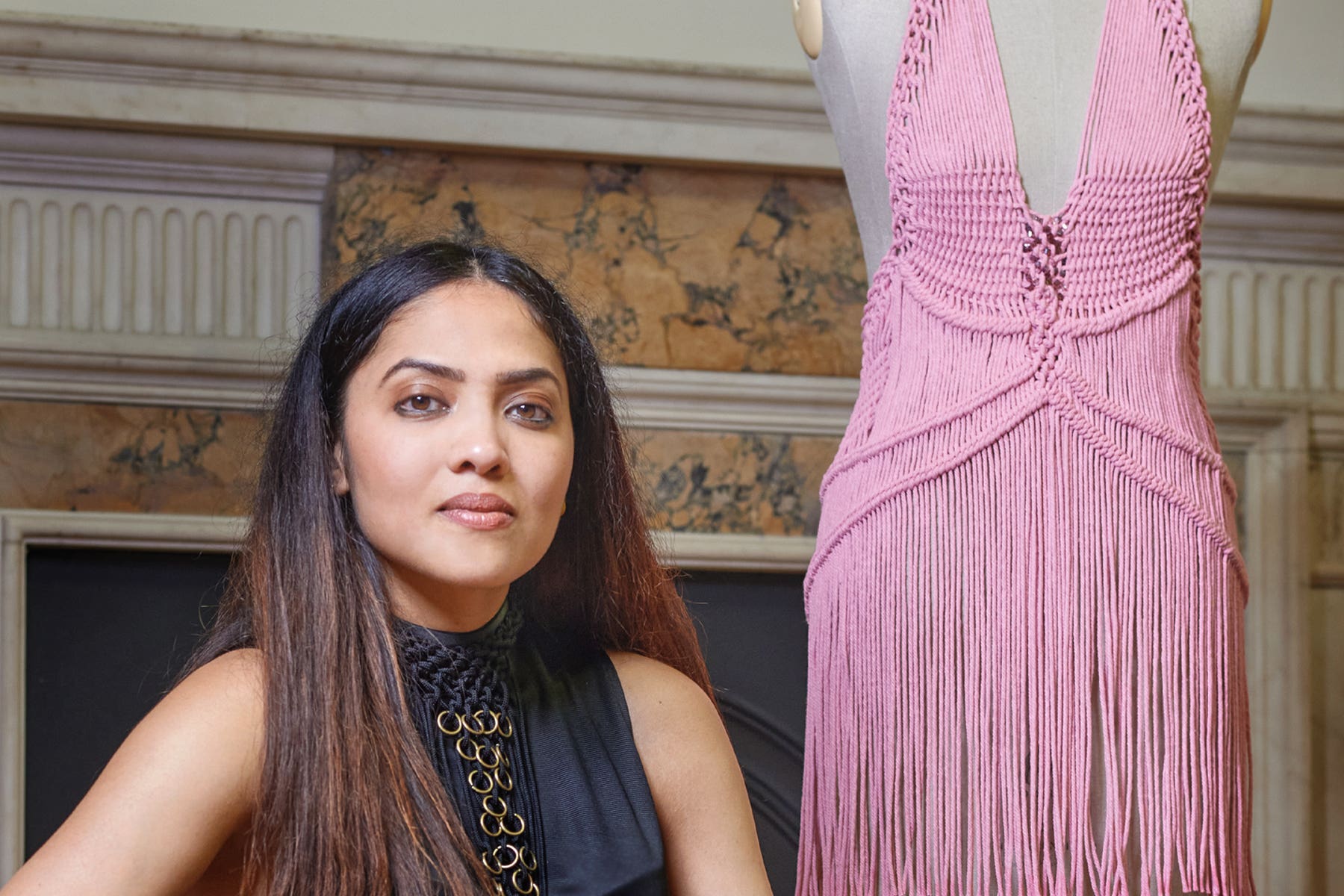L Saha: How this luxury designer makes sustainability a reality
Prudence Wade speaks to designer Laboni Saha ahead of the label’s spring/summer 2024 London Fashion Week show.

A lot is made of the dizzyingly fast-paced nature of fashion.
And while the industry is dominated by fast fashion and trends that move in the blink of an eye, there are also labels like L Saha – which advocates for a real and practical approach to sustainability.
Set up by Laboni Saha in 2014, the brand’s catchphrase is ‘timeless true luxury’.
“I had mentors in the industry who said don’t use the word ‘timeless’ in front of buyers, because they don’t want timeless – they want something that’s going to be for that season,” Saha told the PA news agency.
But she stuck to her guns, and said: “The vision of the brand was to be something that fashion usually is not. Fashion is usually very short-lived – it’s common knowledge fashion is a fast-moving industry.”
This idea of being timeless is reflected in Saha’s designs.
“All our shows bring back items that were designed a few seasons ago,” she said – for example, the spring/summer 2023 collection featured looks that were first shown in 2015.
“When we say ‘timeless’, it’s a fancy word to use. But what does timeless mean? When you’re seeing the same pieces on the runway eight years later, that’s what timeless stands for.”
Sustainability has been front of mind since the brand’s inception, with Saha tracking “the journey of the material before it comes to us”, she said, “But also the processes we use in making the garments.
“So to share an example, some of our pieces are handwoven in our studio in London. It takes an incredible level of craftsmanship, but also it takes a lot more time than a general ready-to-wear piece would take. So the process being slow – or I’d say, requiring high levels of craftsmanship – automatically makes it, in a way, less impactful on the environment, because the machine time on these items are very small. We’re not using electricity, we’re not using any chemicals, we’re not using energy in any form – it’s purely handwork.”
She works with embroiderers and artisans who have been doing hand-beading work for four or five generations, and wants to change our perspective on fashion.
“In the fast world and very technologically driven world that we live in, sometimes it’s easy to forget the real value in a garment,” she said.
“Fashion has sadly become quite throwaway in nature, because it’s available at quite cheap prices to the vast majority – in comparison to our parents’ generation or the generation before, where they had to spend more to get a single item.
“Oftentimes, how we value things is in a way aligned to how much we have to pay for it. So our focus as a brand is going back to more traditional forms of craftsmanship – in a sense, we’re trying to remind our consumer the real value behind the product.”
L Saha is a luxury fashion house and the prices reflect this, with ethereal pale pink tea dresses retailing at £1,152, blush tailored jackets costing £684, and burgundy skirts £369.
“Our products are more on the verge of artwork rather than a commodity,” Saha noted.
“We tend to treat our work as art, rather than something you buy as a commodity, that you use and then discard.”
L Saha’s latest collection will debut on September 15, the opening day of London Fashion Week, and Saha suggested it’s vital the brand is on the official schedule.
“We want to be a voice for some kind of change or revolution within the industry, it’s very important for us to be on the platforms where that message can be heard.
“London Fashion Week is one of the best places – it’s known for emerging names, it’s known for what is up-and-coming… It becomes very valuable for us to stay on the calendar and keep trying to reiterate what we want to say through the work we do.”
With nearly a decade in the industry, what has Saha learned along the way?
“You’ve got to be a risk-taker,” she said.
“Sometimes it may feel a bit scary to go against what is the norm in the industry, but if it feels right for the business, it’s important to take the risk and be true to the values that you as a founder, but also you as a brand want to stand for.”
Something else she’s picked up is “results come slowly”.
She said: “Fashion is a business where you have to pay it forward in a way, you’ve got to create the value upfront and see results later. It’s not as quick a turnaround like other industries.”
Saha has learned it’s important to build the brand’s value first, “Before the industry starts noticing your work”.
Since the brand’s inception, it has picked up a range of fans – and Saha said her customer “varies quite a bit”.
“We have our more mature customers who are in the age bracket of 45 to 55 or older, who tend to buy our more classic designs. But you also see an increasing number of 30-plus women who want to incorporate items in their wardrobe that are not so obviously from a specific brand.
“So they’re seeking out the lesser-known or undiscovered names in the designer fashion world.”
While there is no typical customer, one thing unites them: “She wants to look and feel beautiful.”
Subscribe to Independent Premium to bookmark this article
Want to bookmark your favourite articles and stories to read or reference later? Start your Independent Premium subscription today.
